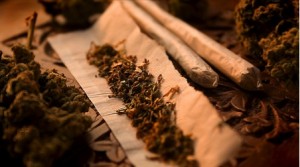You have no items in your cart. Want to get some nice things?
Go shoppingGovernment laws in Amsterdam have been rife with talks of shutting down its notorious coffee shops and phasing out the sales of marijuana to tourists by the end of 2011. News of this kind is enough to make any hippie/overindulgent student run to the nearest airport to grab a last weekend bender in the city before the laws finally pass. Never mind the lure of refreshing Heineken beer – marijuana is easily Amsterdam’s biggest draw in attracting visitors from around the world. With ‘coffee shops’ lining its rustique-style cobbled avenues and meandering canal side streets, the soft drug is available, legal and easier to buy than an actual cappuccino (noted: there wasn’t a single Starbucks sighted on the streets of Amsterdam – two fingers up to corporate globalisation?). With these new drug laws, how will Holland’s small but cosmopolitan capital survive? Will its tourism industry be destroyed under the controlling infrastructure of these new rules, driving visitors to the shores of increasingly hedonistic destinations such as Pattaya and Ayia Napa?
For decades, Amsterdam has been a tourist hotspot, the city of hallucinogenic dreams and garish red lights. In my short stay there, I saw hoardes of young tourists from Europe and beyond ambling down Amsterdam’s famed streets, sauntering into coffee shops. The majority of them were dimly lit, smoky and quiet – like a pleasant bar. There, you’ll be offered free grinders, tobacco, papers and filters if you buy the weed at the counter. Ironic, really, for a place that charges 2 euro for a splash of ketchup with your meal. The atmosphere of these coffee shops is more ‘relax, take it easy’ (one place was called ‘double reggae’: not single, but double) than you would think, and everywhere I looked there were ‘NO HARD DRUGS’ signs stuck up on walls. You could buy liquid cocaine and magic mushrooms in some souvenir shops, still, but in the coffee shops it was all about the marijuana.
Walking around Amsterdam, it’s difficult to see the conflict and controversy supposedly rippling the whirlpool of the city’s reputation; all around there are couples and families strolling nonchalantly by the canals. The trams run regularly and aren’t populated with reckless youths (London, anyone?), and overall the standard of living appears to be more than agreeable. Is this really the original sin city? Or is it merely a small city bursting with culture and youth, friends and strangers popping into coffee shops for a quiet smoke mid-week? Look how well the Prohibition in the 20s turned out. Now, almost a century later, alcoholism has risen to staggering new heights, a drunk on every doorstep being a common sight. A night in London compared to a night in Amsterdam is, worryingly, a lot more dangerous: I’ve seen fights break out that involve knives, girls intent on ripping each others’ scalps off, cars trashed by reckless joyriders. In Amsterdam, it’s busy, but everyone’s smiling and the city feels incredibly safe. What are we doing wrong? Or should we be asking: what is Amsterdam doing right?
Recent studies have shown that only 5.4% of the population of Netherlands uses cannabis, in comparison to UK’s 9%. The cannabis smokers in Amsterdam were well-dressed, articulate and genial in his/her approach to others. On the flipside, when I think of a cannabis smoker in the UK, I see a sloppy, unwashed slob who can barely make it to work (I apologise for the gross generalisation but sadly my experience with these people has not been limited to a narrow spectrum). What’s the difference here? Addiction, of course. In Amsterdam, no one seems addicted to the point of uncontrollable paranoia. Despite the scores of people crowded in coffee shops, I noticed that not all of them felt the compulsion to smoke. There were some people that were stalwart in their disciplinary decisions not to light up. But imagine a bar and everyone in it. Even in an imaginary setting, doesn’t everyone hold an alcoholic drink in their hands?
What’s the big deal about marijuana? I speak half ironically here. Of course, one should be aware of the side effects whilst smoking weed: rapid heart rate, low blood pressure, perception distortion, lung and throat problems, anxiety, dry mouth…
But consider this – how about a side of Chlamydia with your dinner? Or HIV with your Heineken? Isn’t that worse? Why aren’t the authorities turning their attention to the scantily clad prostitutes pressing themselves against the windows? Amsterdam’s red light district, alive both night and day (the uglier ones occupy the mid afternoon windows, lumpy and glassy-eyed) is the city’s second top attraction. If the Dutch government is so concerned about its reputation and attracting the ‘wrong crowd’, why are they shining their single spotlight on a green bud and not on the infection riddled bodies of sex workers?
Ysabelle Cheung







Nice article, although ‘infection-riddled bodies of sex workers’ is a bit harsh. Pretty sure the sex industry is exceptionally well-regulated in the Netherlands, and sex workers have to maintain good sexual health. It’s all institutionalised and regulated to prevent that kind of thing.
Actually, the Government are concerned about the red light area and it’s connection with organised crime and over the past few years have closed a number of operating windows. But at the same time they are trying to find the balance between limiting it and pushing it underground where arguably the girls involved will be more at risk than they are currently.